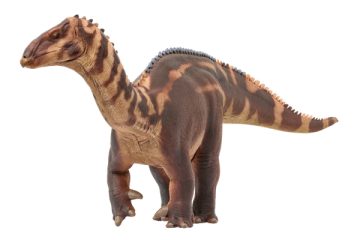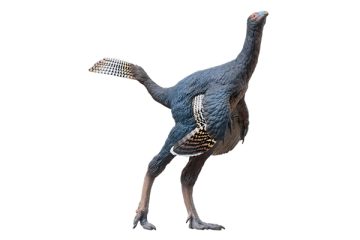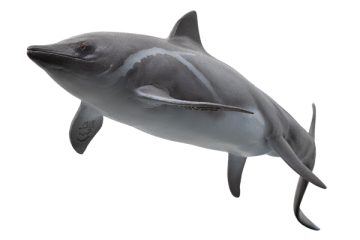
Stories written by: YANG Yang
Who is Haylee the Helicoprion?
Haylee the Helicoprion is an ancient cartilaginous fish that looks like a shark but isn’t. Its most peculiar part is the chainsaw-like teeth. It loves to prey on squids and octopuses and is an active predator in the ocean.

Model Size / 21cm X 8.3cm X 7.5cm
Model Material / Environment-friendly PVC, hand painting
Model Structure / Solid Structure
Package Size / 24.6cm X 8.6cm X 12.6cm
Inside Package / Model + A3 Poster + Product Manual
Transparent Support / Yes
How did ZHAO Chuang and YANG Yang create Haylee the Helicoprion?
The Size of Haylee the Helicoprion
Helicoprion was a giant cartilaginous fish; some individuals may exceed 12 meters in length. We set the body length of Haylee the Helicoprion as 12 meters, a large member of the family.

The Head of Haylee the Helicoprion
In earlier restorations, the head of Helicoprion looked more like that of their close relatives, the sharks. But it was only after discovering the cartilage remains of Helicoprion’s head that researchers finally determined what its head looked like. We followed the latest research and reconstructed the head of Haylee the Helicoprion.
The Teeth of Haylee the Helicoprion
The unique feature of Helicoprion was the spiral teeth in its mouth, similar to a chainsaw. Regarding the structure and location of the teeth of Helicoprion, people were not clear at the beginning due to insufficient fossil evidence. It was not confirmed until several specimens containing the jawbone were discovered later. Looking at the head of Haylee the Helicoprion, we can see its teeth, which are located in the lower jaw and has a spiral shape with three and a half whorls, each with about 40 teeth.

The Trunk of Haylee the Helicoprion
In early restorations, the caudal fin of Helicoprion was very slender, similar to that of sharks. Still, now people believe that its caudal fin is crescent-shaped, with the upper and lower lobes almost symmetrical. Through their close relatives, we speculate that Helicoprion may have a pair of pectoral fins and a dorsal fin without a second dorsal, pelvic, and anal fins, which indicates that they swim very fast. When we restored the Haylee the Helicoprion, we followed these scientific studies.
Learn while Play
Subscribe to PNSO.Official YouTube channel. Get to know Haylee the Helicoprion with ZHAO Chuang in the playlist of PNSO Prehistoric Animal Models-Get to Know Marine Animals. Learn to draw Haylee the Helicoprion with ZHAO Chuang in the playlist of PNSO Prehistoric Animal Models-Learn to Draw Marine Animals.



